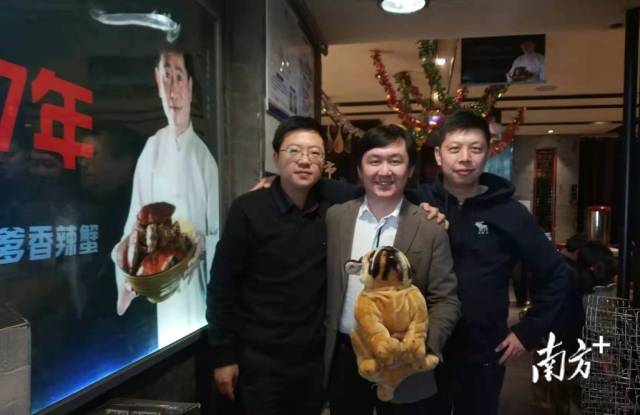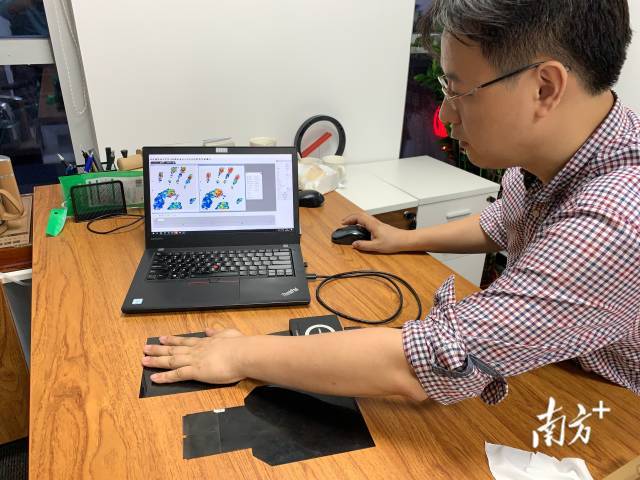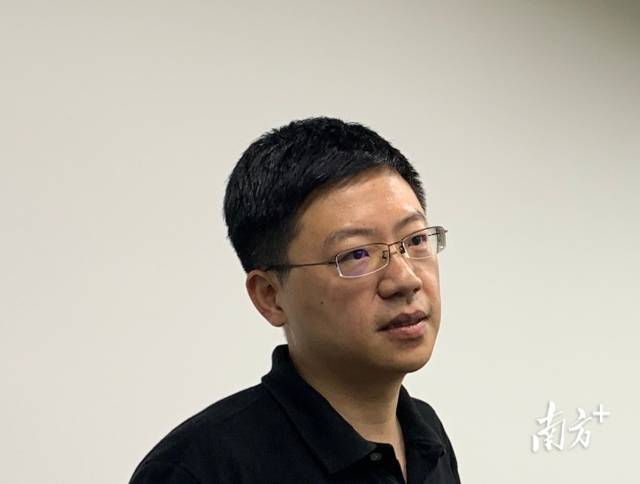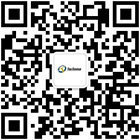new energy
The new generation of sensing technology has been implemented in Shenzhen, using "perception skin" to solve the bottleneck problem in the manufacturing industry. Looking for Shenzhen's high-precision and innovative technology
Release time:
2023-11-16 10:21

On a thin and transparent "paper", press it by hand, and the force result and force process are all recorded. This technology solves the "bottleneck" problem in the field of pressure measurement, which is common in the manufacturing industry.
In 2018, Pan Tingrui and his high school classmate Wang Xiaoyang, together with the Institute of Advanced Technology of the Chinese Academy of Sciences, established TacSense Technology and developed a new generation of flexible tactile sensing technology - ionized sensing technology, which has been successfully industrialized and launched flexible tactile sensors used in consumer electronics, medical devices and other fields.
"Titanium Sense is slowly boiled by time, and it has been running slowly for more than ten years in the early days, running for a long time, and is not known to the market. It has only been less than 1 year for TacSense products to really reach the market, and our industrial products have been sold for less than a year, and consumer electronics have been sold even shorter. Wang Xiaoyang told the Southern + reporter.
A new generation of sensing technology has taken root in Shenzhen
In the 70s of the 20th century, the team of German botanical taxonomy scientist Wilhelm Bartlot discovered the "lotus effect". Professor Pan Tingrui, a professor in the Department of Biomedical Engineering at the University of California, Davis, has keenly discovered that when tiny droplets fall on the surface of the lotus leaf, there will be obvious tremor from the perspective of mechanics and sensing. So I thought: if we can accurately measure the subtle fluttering details of lotus droplets, can we make a very sensitive sensor on a flexible surface? In 2012, Pan Tingrui first proposed a new sensing technology - ionized sensing technology.
In 2018, the ionized sensor principle proposed by Professor Pan Tingrui was listed as the fourth type of sensor principle after the principle of resistance sensor, capacitive sensor and piezoelectric sensor by Lab on a Chip, which was first proposed by Chinese scientists.
According to the classification, there are types of pressure sensors that convert tactile pressure into electrical signals: piezoresistive, capacitive, and piezoelectric. Piezoresistive sensors have the disadvantage of not being sensitive enough to the force dimension. Capacitive sensors, on the other hand, improve sensitivity, but they are costly and inflexible enough to solve environmental noise problems. Piezoelectric sensors can only measure dynamic pressure, not static pressure.
In terms of sensitivity, mechanical response speed, noise immunity, flexibility, manufacturing cost, low power consumption and other performance, ionized sensors are far superior to the existing flexible sensor technology. The sensing principle of ionized sensors is not to obtain external pressure through the deformation of the contact film, but to sense the external pressure through the change of the contact area of the coated and cured ionic gel and conductive electrodes.

Pan Tingrui (right), Wang Xiaoyang (left) and Wang Xiaochuan, founder of Sogou. Photo courtesy of the interviewee.
Science and technology cannot be put in the laboratory to realize real social value. Professor Pan Tingrui established TacSense in Silicon Valley as early as 2013 and did some exploration work on application landing, but it has not been able to industrialize it. So, Pan Tingrui returned to China to start a business. In 2017, under the "prodding" of Wang Xiaochuan, CEO of Sogou, a high school classmate, Pan Tingrui and another high school classmate, Wang Xiaoyang, met in Beijing. Wang Xiaoyang has a background in investment management, and can integrate the company's operation, capital operation, underlying technology empowerment and other businesses, and the two hit it off.
In 2018, TacSense Technology was established and received the support of the Pearl River Plan Entrepreneurship Project in Guangdong Province. The reason for choosing Shenzhen, Wang Xiaoyang believes, is that Shenzhen has a good hardware supply chain environment. All kinds of raw materials and parts for the production of TacSense can be purchased in the Greater Bay Area, and product proofing can also be quickly solved.
One of the things that impressed Wang Xiaoyang was the vast future scenario of ionized sensors. The Internet of Things is the era of the Internet of Everything, and there are countless hardware intelligent terminals, so there is room for countless sensors. Ionized sensors are one of the basic tools of the Internet of Things, so TacSense Technology is a technology-based company empowered by the bottom. At present, the company's R&D technology has matured, and has mastered a number of key technologies such as ionized sensing, signal processing, wireless transmission, flexible processing, biological modeling and algorithms required by the bionic tactile sensing system, and has published more than 200 high-level scientific and technological papers in academic journals including Nature and Science, and applied for more than 30 patents. The company's next step is to focus on marketing promotion and the output of engineering standardization solutions.
Simulated haptics enable intelligent production inspection
The core technology of TacSense Technology is a tactile sensor, which has ultra-high sensitivity flexibility, ultra-thin and ultra-small curved surface and biocompatibility, which can accurately measure various pressures inside and outside the human body, and its difficulties are concentrated in the bionic medium, which can be made on silica gel, cloth, paper and other media, and has achieved a great technological breakthrough.
Wang Xiaoyang introduced that in recent years, TacSense has done two things: one is to sink in the medical field, launching capsule gastroscopic robots and big health wearing shoes. The capsule gastroscopic robot can enter the human body to detect the gastrointestinal tract (there is a small video), which has entered the clinical trial stage, and the big health wearable shoes are applied to Parkinson's patients and have been certified by the US FDA.
The second is the introduction of pressure measuring devices for the industrial sector. For example, the panel in industrial production is often made of multi-layer substrates, and the force of these layers of substrates must be very uniform, because the contact pressure between the substrates has a great impact on the performance of the product, especially the pressing of the overall frame, and the technical precision is extremely high, which gives birth to products that detect the pressure of equipment.
The traditional product is pressure-sensitive paper, and a box of pressure-sensitive paper can reach more than 3,000 yuan. Wang Xiaoyang introduced that in the past 30 years, the Chinese market has been monopolized by Japan's Fuji, with an annual import volume of nearly 1 billion US dollars. Nearly 10 years ago, foreign electronic pressure testing equipment entered the Chinese market, and there were tens of millions of US dollars in market sales a year.
TacSense Technologies can digitize the pressure measurement results of your equipment.

Photo: Li Ronghua and Wang Xiaoyang of Nanfang Daily
A domestic mobile phone assembly has been using a foreign pressure measuring device, but the measuring device sensing diaphragm has to be replaced every six months, and later because the foreign company took the initiative to decouple and could not be replaced, the company had to switch to more expensive and traditional pressure-sensitive paper. After understanding this demand, TacSense launched a new pressure distribution measuring instrument through more than a year of research and development, which was officially delivered in the second half of 2020, with positive feedback from the customer market and directly entered the Apple supply chain company to ensure the stable and reliable production of key components of Apple products.
It is reported that the standard model of electronic pressure testing equipment of foreign companies is 40,000 US dollars, while the market price of TacSense benchmark products is about 100,000 yuan.
Wang Xiaoyang introduced that the difference between the titanium depth pressure distribution measuring instrument and the pressure-sensitive paper is the difference between digital cameras and film. During the stress test, the stress process can be recorded with TacSense products. A lot of industrial statistical analysis can be done during playback, such as how the center of gravity changes, while the pressure-sensitive paper is disposable, but the paper reflects the final force result, but cannot reflect the force process, and TacSense products can be converted to analog and digital signals to achieve online monitoring.
"TacSense has picked up the market that foreign companies have taken the initiative to decouple." Wang Xiaoyang introduced that the pressure distribution measuring instrument of TacDepth has realized independent innovation and import substitution, and it is replaced by completely different technical routes, patents and products, and provides secondary development interfaces to contribute to the integration of domestic force dimension intelligent equipment.
In Wang Xiaoyang's view, to achieve import substitution, one must reduce costs, and the other must improve the "degree of customization". Enterprises need to customize according to the customer's application scenarios, and the demand for intelligent equipment in the force dimension is actually ubiquitous, which is a strategic direction for China as a manufacturing power. He introduced that even the suppliers of TacDepth sensor membranes now need to use TacDepth pressure distribution measuring instruments to ensure the consistency of the film material.
▲TacSense Technology pressure measurement demonstration
"Invisible sensors" become a necessity for the Internet of Things
The TacSense sensor measures the "contact surface change", so it needs to be contacted, which is the technical principle of bionic haptics, and its core technical feature is supercapacitance, that is, the capacitance change has a very large response to the change of force dimension. That is, the slight change of the force surface can cause a very large capacitance change of the TacDepth sensor, so the TacDepth sensor is a particularly sensitive technology, which can reduce misjudgment and easily extract the signal from the noise.
Moreover, the TacDepth sensor material has true flexibility, it is a fully transparent liquid material, which can be used when applied to common flexible substrates such as plastic, cloth, and rubber, like a layer of "sensing skin". "We used to make sensor materials on the non-woven fabric of yoga clothing, which can be linked online and offline with sports apps.
Now, another major application scenario of TacDepth pressure measurement technology is new energy batteries, enabling lithium battery manufacturers to have intelligent pressure detection capabilities. The battery equipment industry needs to ensure the uniformity of the battery pressing process and the accuracy of the contact pressure of each key component, so as to achieve the production of batteries with higher energy density and lower risk of failure such as battery bulging.
Pan Tingrui believes that now is a good market window for the development of tactile sensors. Because artificial intelligence, edge computing, and cloud have all developed, it is a transition period from the Internet of Everything to the Intelligent Internet of Everything. IoT terminals have led to an explosion of demand for various sensors.
"Now, every time a new wave of intelligence appears, new application scenarios can be discovered. The company's internal description is to use the ionized sensing technology as a hammer to smash the nails of different new application scenarios. Which nail is attractive enough, Titanium Sense will hit which one first. Wang Xiaoyang said.
Wang Xiaoyang believes that the thin development of technology is due to long-term accumulation.
"Because the sensor materials are independently developed, none of our key technologies are controlled by others. We have been sharpening our sword for 10 years, and it took 4 years to go from ionized materials to flexible substrates for sensors from 2010 to 2013, that is, it took 4 years to tackle the mass production technology of liquid materials on various thin film substrates. From 2013 to 2015, he focused on promoting the analog-to-digital signal conversion of sensors, including the independent design of IC chips, also for 3 years. ”
Moreover, TacSense also continued to "contract" the whole chain of its tactile sensor industrialization. In the past 10 years, TacSense Technology has been polishing the whole link of the industrial chain, providing customized solution support and algorithm support on the basis of standard sensors, and providing complete integration services for customers in three directions, including medical devices, industrial equipment and consumer electronics.
"Our employees now go to the customer's assembly line every day to guide assembly production, do mass production assembly, and provide structural assembly instructions, so that customers can fully integrate TacSense products." Wang Xiaoyang said.
Business profile
TacSense Technology
Project Introduction: A high-tech start-up that develops and owns the world's first flexible ionic haptic sensing technology, and provides the world's most sensitive and flexible human-machine sensing and interactive interface.
Team members: founder Pan Tingrui, founder Wang Xiaoyang
Financing Status: There have been three rounds. In September 2020, it received tens of millions of yuan in Series A+ financing, led by Xiaomi Yangtze River Industry Fund and followed by Lenovo Venture Capital. On December 10, 2019, TacSense Technology received tens of millions of yuan in Pre-A round of financing, and the investors were Tongchuangweiye, Zhao Hui and Yuandu Venture Capital. On September 30, 2018, TacSense Technology received an angel round of financing, the amount was not disclosed, and the investor was Yuandu Venture Capital.

Wang Xiaoyang
We are all contributing to the linkage of industry, academia and research. At the strategic level of industry-university-research integration, there must be a strategic plan to pave the way, otherwise pure socialized funds cannot afford to wait, gamble, and bear time and risks.
For businesses, new markets are being born every day, and the key is to seize the opportunities. For example, why earphones, especially wireless earphones, are so popular now, the source is that mobile phone factories are not equipped with headphones, which are made alive by the market, and earphones have become a separate category and a free and competitive market. If you don't send mobile phone chargers in the future, I believe that a large number of smart charging hardware companies will appear soon.
Now there are new categories coming out of the market every day, and new needs are coming out every day, and whoever catches a mouse first is a good cat. But at the same time, the life cycle of these products will be shorter, and if you want to continue the life cycle of products or electronic components, there will be a phenomenon of integration between electronic components, such as making a "two-in-one" chip is always a little longer than the life cycle of a single-core chip.
We pay attention to the iterative innovation of the electronic market, first of all, the market sensitivity must be very good, and the product execution must be very strong, so the TacSense team is also constantly iterating and growing.
recommend News





